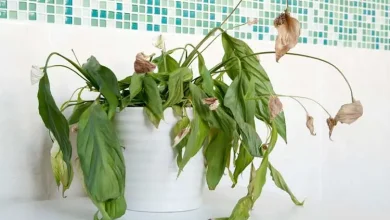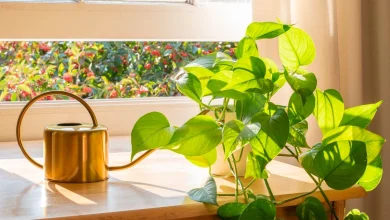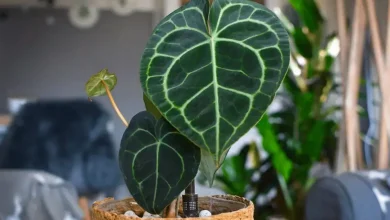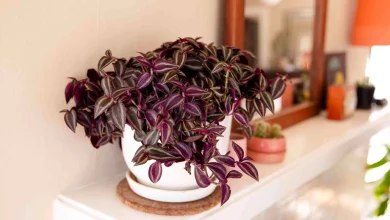Syngonium Mottled Mojito Care
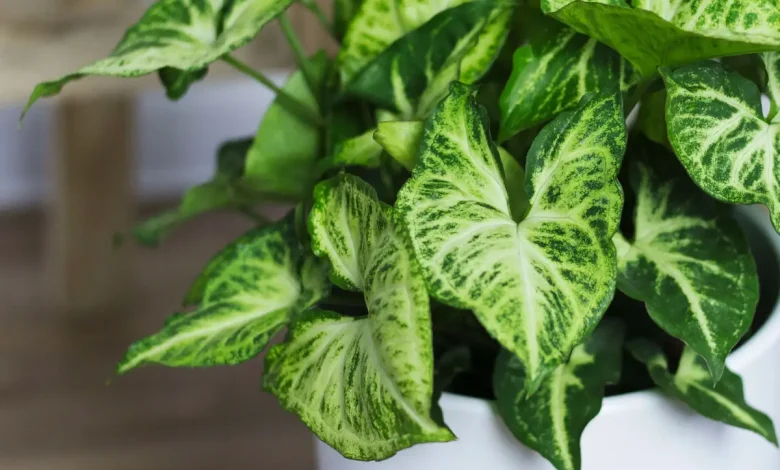
The Syngonium Mottled Mojito offers unique tricolored foliage on trailing vines that make a striking addition to any indoor space. This easy-growing syngonium thrives with minimal care, making it an excellent choice for beginners. Here is a detailed guide to growing and caring for the syngonium mottled mojito houseplant.
Native Habitat and Growth Conditions
Understanding where the syngonium mottled mojito originates provides insights into its care needs and helps you replicate an ideal growing environment.
Climate and Range
Syngonium are native to tropical regions of Central and South America. The mottled mojito variety thrives in warm, humid environments.
Natural Habitat
In the wild, syngonium grow as vine-like epiphytes. They climb up tree trunks and wrap around branches in shady, moist forest understories.
Care Requirements for Mottled Mojito Syngonium
Caring for syngonium mottled mojito includes providing the right potting mix, water, light, temperature, humidity, and nutrients.
Potting
Use a well-draining potting mix amended with perlite or bark chips. Provide a moss pole or trellis for vines to climb.
Water
Water thoroughly when the top inch of soil is dry. Avoid letting pots stand in water. Moderate watering is vital.
Light
Bright, indirect light keeps mojito syngonium growing vigorously. Direct sun will scorch leaves.
Temperature and Humidity
Ideal temperatures are 60-80°F. Average room humidity is fine. Mist leaves occasionally for added humidity.
Fertilizer
Feed monthly during spring and summer with a balanced houseplant fertilizer diluted to half strength.
Supporting Vines
Provide a moss pole, trellis or other support. Tie stems loosely in place as they climb. Prune to maintain desired size.
Pruning
Trim off any dead or damaged foliage. Prune back trailing stems to promote bushiness.
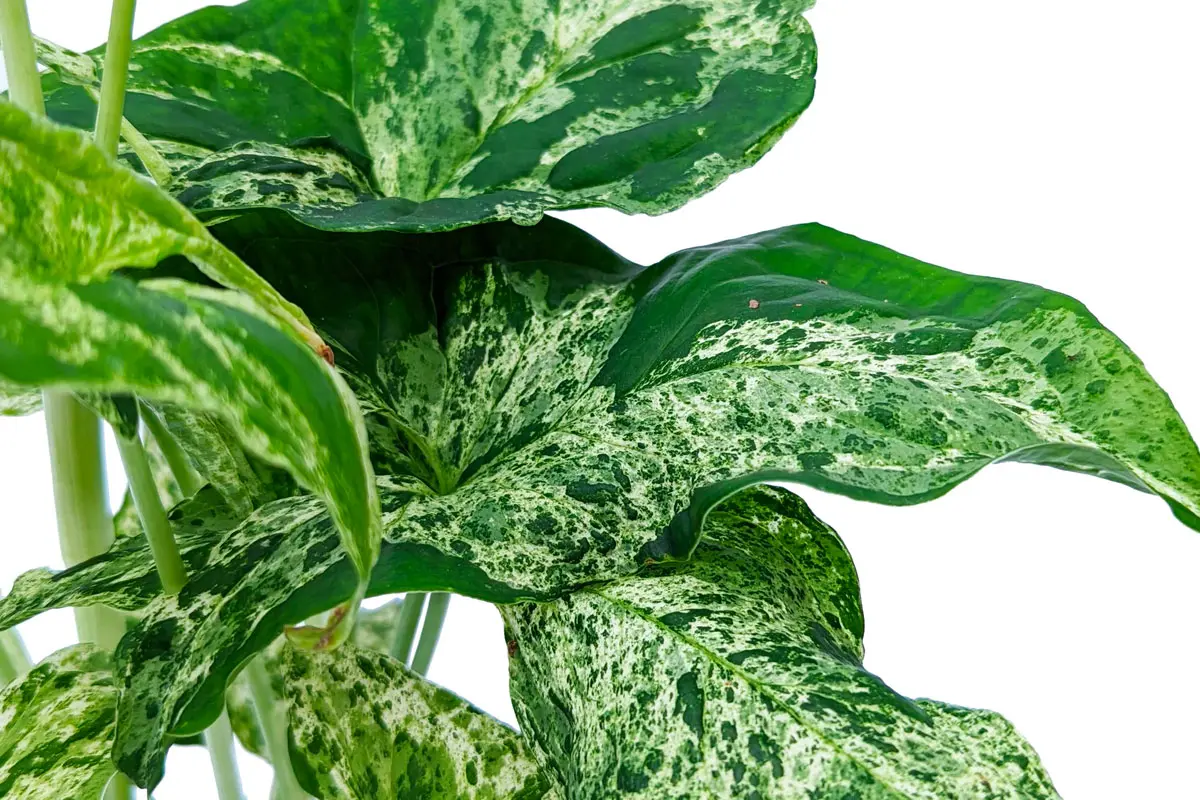
Propagating Syngonium Mottled Mojito
Propagating syngonium mottled mojito from stem cuttings or division is fast and easy.
Propagation by Stem Cuttings
Take 4-6 inch cuttings, remove some lower leaves, and root in water or moist potting mix. New plants form in weeks.
Propagation by Division
Divide at the root ball, ensuring each division has some roots and stems. Repot divisions into fresh potting mix.

Common Pests and Diseases
Overall, syngonium are less prone to pests and diseases but may occasionally encounter:
Pests
Aphids, mealybugs and scale insects. Treat with neem oil or insecticidal soap spray.
Diseases
Root rot from overwatering. Allow soil to dry out more between waterings.
Tips for Displaying Syngonium Mottled Mojito
The gorgeous tricolored leaves of syngonium mottled mojito create stunning displays in any indoor space when cared for properly:
- Show off trailing vines in hanging baskets.
- Train vines up a moss pole or trellis placed in a corner.
- Place in an elevated hanging pot to highlight beautifully variegated foliage.
- Mix with other trailing plants like pothos for cascading textures and colors.
Here is more content continuing the article on syngonium mottled mojito care:
Troubleshooting Common Problems
While generally low-maintenance, syngonium may encounter a few issues. Here are some common problems and solutions:
Wilting Leaves
If leaves are drooping, the plant is likely getting too much or too little water. Check soil moisture and adjust watering frequency accordingly.
Sparse Foliage
If leaves are sparse with long bare stems showing, it needs more light. Move to a brighter location or provide supplemental lighting.
Leaf Yellowing
Yellowing typically indicates overwatering. Allow the soil to dry out further between waterings. Remove any saturated soil and repot with fresh mix.
Leaf Spots or Blight
Bacterial or fungal leaf spot manifests as small brown blemishes on the foliage. Improve air circulation and avoid wetting the leaves.
Leggy Growth
If stems are growing long between leaves, increase light exposure. Prune back trailing stems to encourage bushiness.
Failure to Thrive
If your syngonium lacks vigor, causes may include potbound roots, improper watering, or insufficient lighting. Assess care and make adjustments.

Unique Varieties of Syngonium
While the mottled mojito variety boasts tricolored foliage, there are many other interesting syngonium cultivars to collect:
- Syngonium ‘Pixie’ – Compact variety with small, oval leaves.
- Syngonium ‘White Butterfly’ – Leaves featured green and white variegation.
- Syngonium ‘Neon Robusta’ – Vibrant lime green leaves on vigorous vines.
- Syngonium ‘Pink Splash’ – Leaves are blushed with pink, white, and green.
- Syngonium ‘Strawberry Cream’ – Leaves emerge pink and cream, maturing to green.
Growing Syngonium Outdoors
In tropical climates, syngonium can be grown outside as groundcovers or allowed to climb up trees and structures:
Planting Location
Choose a partially shaded spot, protected from harsh sun. Amend soil with compost to improve moisture retention.
Water and Feeding
Establish regular watering after planting. Feed 3 times per year with a balanced fertilizer. Apply mulch to conserve moisture.
Support Structures
Provide trellises, poles and structures for syngonium vines to climb on. Tie loosely in place as needed.
Overwintering
In zones 9 and up, syngonium will thrive outside year-round. In cooler zones, bring plants indoors before first frost.
The Lovely Syngonium Mottled Mojito
With its trailing tricolored vines and easy care needs, syngonium mottled mojito brings striking foliar interest to indoor plant displays. Follow the growing tips outlined to keep this tropical beauty healthy and vibrant in any home.
FAQ
How do I encourage bushy growth in my syngonium?
Pinch off stem tips and prune back trailing vines to promote fuller, bushier growth. Provide a moss pole for support.
What causes limp or drooping leaves?
Overwatering and underwatering can both cause leaves to droop. Stick a finger in the soil to gauge moisture levels and adjust watering accordingly.
Why are my syngonium’s leaves turning yellow?
Yellowing leaves can indicate overwatering or insufficient light. Allow the soil to dry out more between waterings and provide bright, indirect light.
How can I revive a syngonium with few remaining leaves?
Cut back any dead stems and move the plant to brighter indirect light. Reduce watering frequency and new leaves should emerge over time. Fertilize monthly.
How do I encourage more variegated foliage?
Give the plant ample bright, indirect sunlight to bring out the beautiful leaf variegation in shades of green, white and pink.



